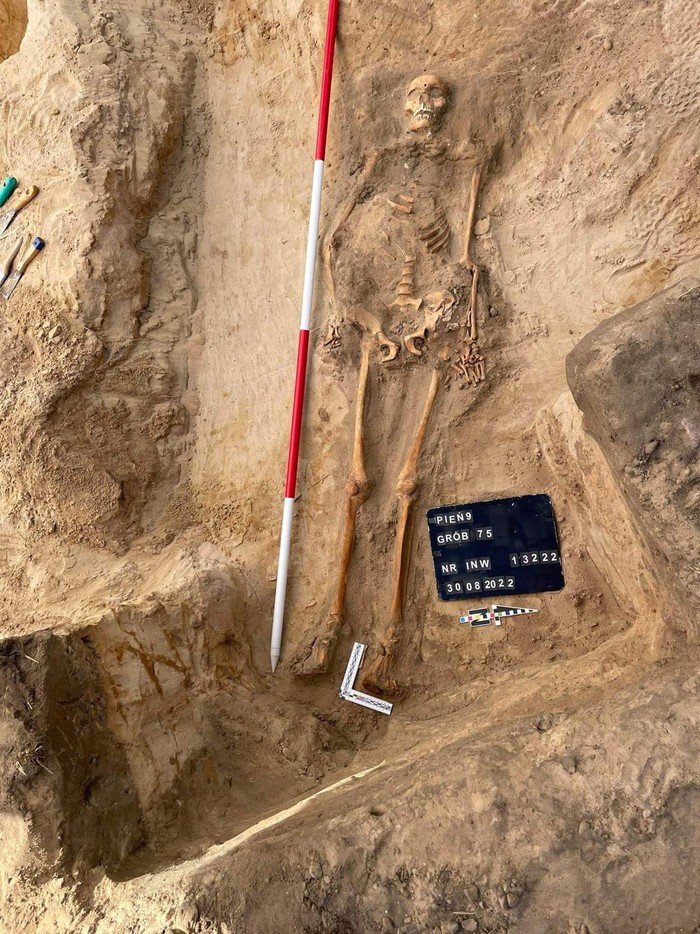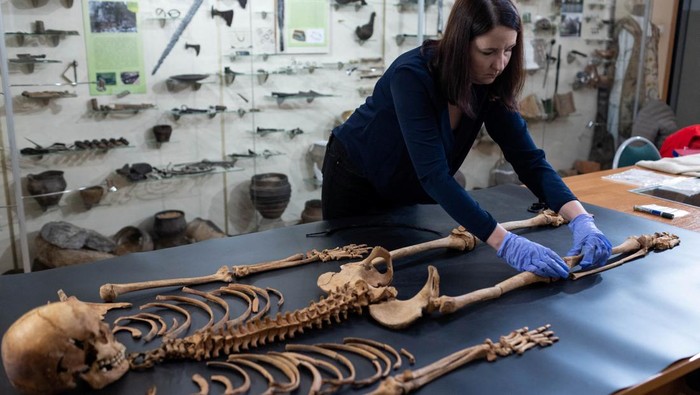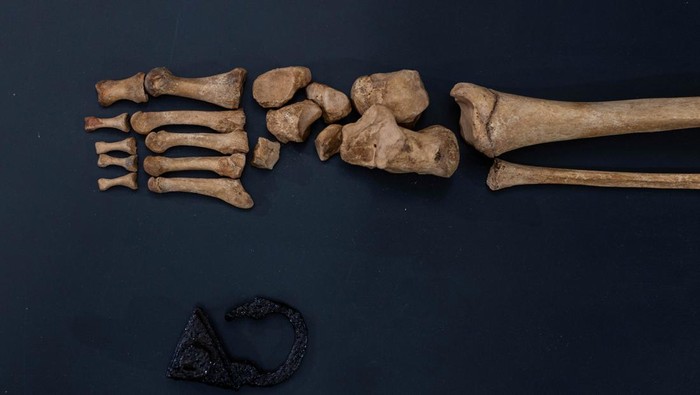Polandia - Arkeolog di Polandia mendapat temuan yang meresahkan. Temuan itu berupa jenazah seorang wanita muda berusia 400 tahun yang dikubur dengan gembok dan sabit besi.
Foto Edu
Arkeolog Ungkap Rahasia Pemakaman 'Vampir' di Polandia

Kerangka seorang wanita muda yang dikuburkan dengan gembok di kakinya dan sabit besi di lehernya sebagai cara untuk mencegahnya bangkit dari kematian, terlihat di Pien, Polandia. Nicolas Copernicus University Institute of Archaeology/REUTERS

Pada musim panas tahun 2022, tim arkeolog dari Universitas Nicolas Copernicus di Polandia membuat penemuan yang meresahkan. Jenazah seorang wanita muda berusia 400 tahun, dimakamkan di kuburan tak bertanda di tanah yang tidak disucikan, dengan gembok di kakinya dan sabit besi di lehernya. Tahun ini, hanya beberapa meter jauhnya, tim yang sama menemukan sisa-sisa seorang anak, berusia lima hingga tujuh tahun, terkubur telungkup dan, sekali lagi, dengan gembok di kakinya. Keduanya, kata para arkeolog, dikuburkan sebagai ' vampir '.

Associate Professor Dariusz Polinski, arkeolog utama pada penggalian di desa kecil Pien, mengatakan bahwa meskipun istilah 'vampir e' adalah istilah modern, masyarakat Eropa Tengah abad pertengahan secara luas percaya bahwa orang mati dapat kembali sebagai makhluk yang dikenal sebagai 'upior' atau 'striga.' Korban penyakit, anak-anak yang belum dibaptis dan mereka yang meninggal dalam keadaan tragis merupakan hal yang paling ditakuti, kata Polinski.

Wanita tersebut, jelas Polinski, kemungkinan besar sedang sakit dan mungkin menderita gejala-gejala yang membuat komunitasnya takut dia bisa bangkit kembali dari kematian. Mengenai anak tersebut, tim Polinski berpendapat bahwa mereka pasti menjadi sumber ketakutan yang lebih besar, karena para arkeolog menemukan bahwa jenazah tersebut telah digali setelah dikuburkan dan batang tubuh serta kepalanya telah dihilangkan.

Mayat-mayat tersebut hanyalah dua dari puluhan kuburan yang ditemukan tim Polinski di lokasi tersebut, sekitar sepertiga di antaranya berisi praktik 'tidak biasa' seperti menguburkan orang mati dengan benda besi - diyakini secara ajaib membuat orang mati tetap mati - dan batu, yang sering ditempatkan di lengan atau leher.

Meskipun telah digunakan selama ratusan tahun, Polinski mengatakan kuburan itu dengan cepat terlupakan pada abad ke-18 dan tidak ditandai di peta tanpa penanda atau batu nisan. Ukuran kuburan masih belum diketahui. Tim tersebut merencanakan studi lebih lanjut di lokasi tersebut menggunakan radar penembus tanah non-invasif.

























































